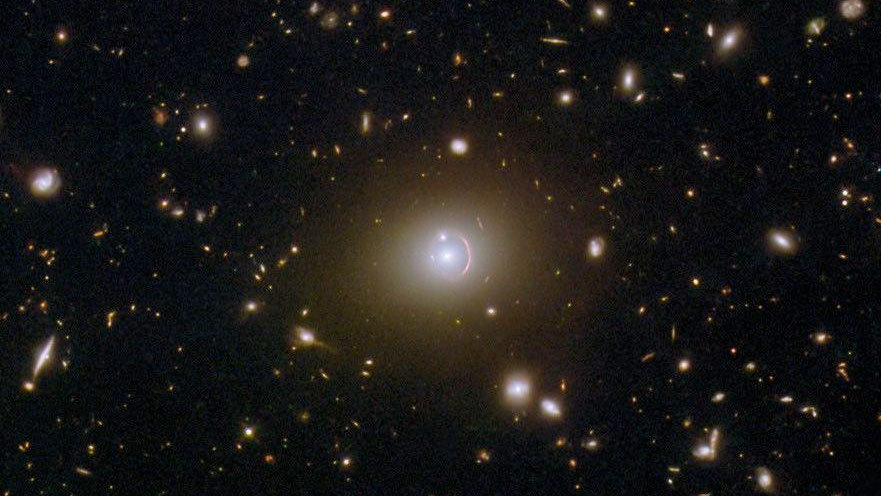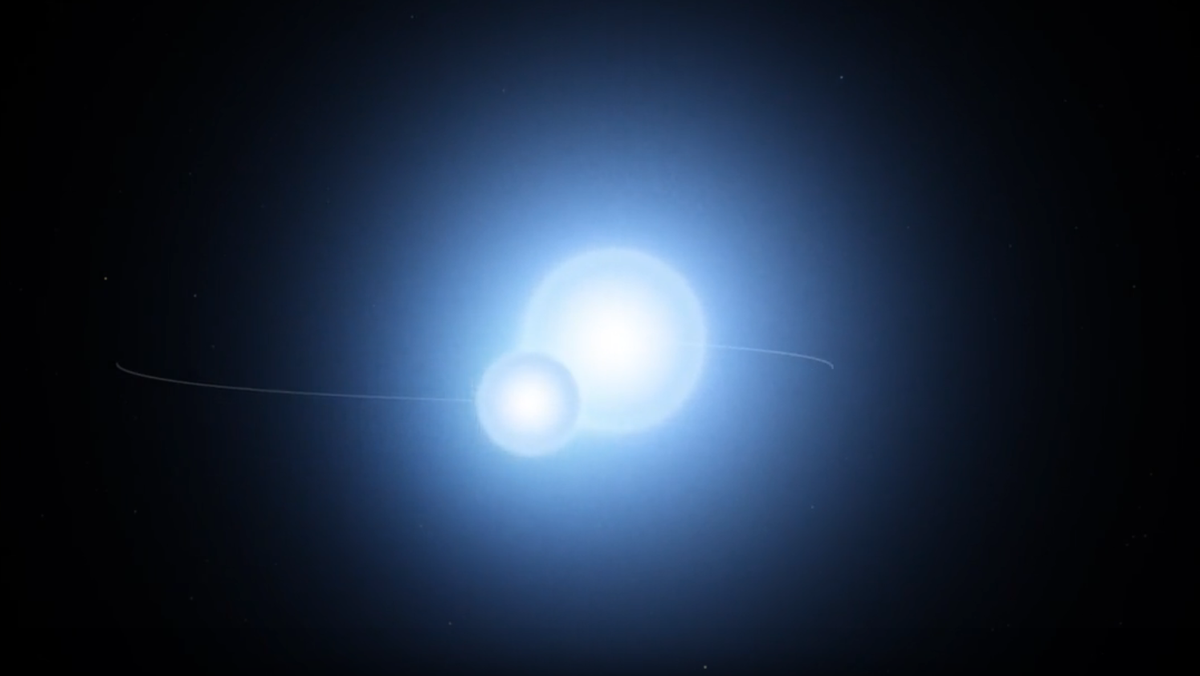
The red arc at the center of this Hubble Space Telescope image is a distant galaxy, called HerS 020941.1+001557. It appears to be partially circling another galaxy, SDSS J020941.27+001558.4, and seems to be intersected in part by the curving, red crescent of light of another remote galaxy, SDSS J020941.23+001600.7,
What is it?
The alignment of the three galaxies creates a type of gravitational lens called an Einstein ring.
Gravitational lenses occur when the light from a very distant object bends (or is "lensed") around a massive (or "lensing") object located between Earth and the distant lensed galaxy. When the lensed object and the lensing object align, they create an Einstein ring.
Einstein rings can appear as a full or partial circle of light depending on how precise the alignment is. The effects of this phenomenon only become clear when dealing with curvatures of light on enormous, astronomical scales.
Where is it?
HerS 020941.1+00155 is now 19.5 billion light-years from Earth, but it appears in the image as it did around 11 billion years ago, when the galaxy was 5.5 billion light-years away and its light began the long journey toward Earth through expanding space.
SDSS J020941.27+001558.4 is located some 2.7 billion light-years away.
Why is it amazing?
The partial Einstein ring in this image was identified by a citizen scientist as part of the SpaceWarps project, which asked the public to search for gravitational lenses in images.
Computers can be programmed to recognize gravitational lensing, but the effects can be easily confused for galaxies that look similar to a distorted background galaxy. Also, in order for the computer to run fast enough to analyze lots of images quickly, they have to cut a lot of corners, and this makes them less effective.
Human beings have a remarkable ability to recognize patterns. With a basic understanding of what the distorted images of galaxies that have passed through a gravitational lens look like, participants in the SpaceWarps project can help discover new examples of this amazing phenomenon, as was the situation in this case.
Want to learn more?
You can read more about the SpaceWarps project and the basics of gravitational lensing.
.png)
 German (DE)
German (DE)  English (US)
English (US)  Spanish (ES)
Spanish (ES)  French (FR)
French (FR)  Hindi (IN)
Hindi (IN)  Italian (IT)
Italian (IT)  Russian (RU)
Russian (RU) 








Comments